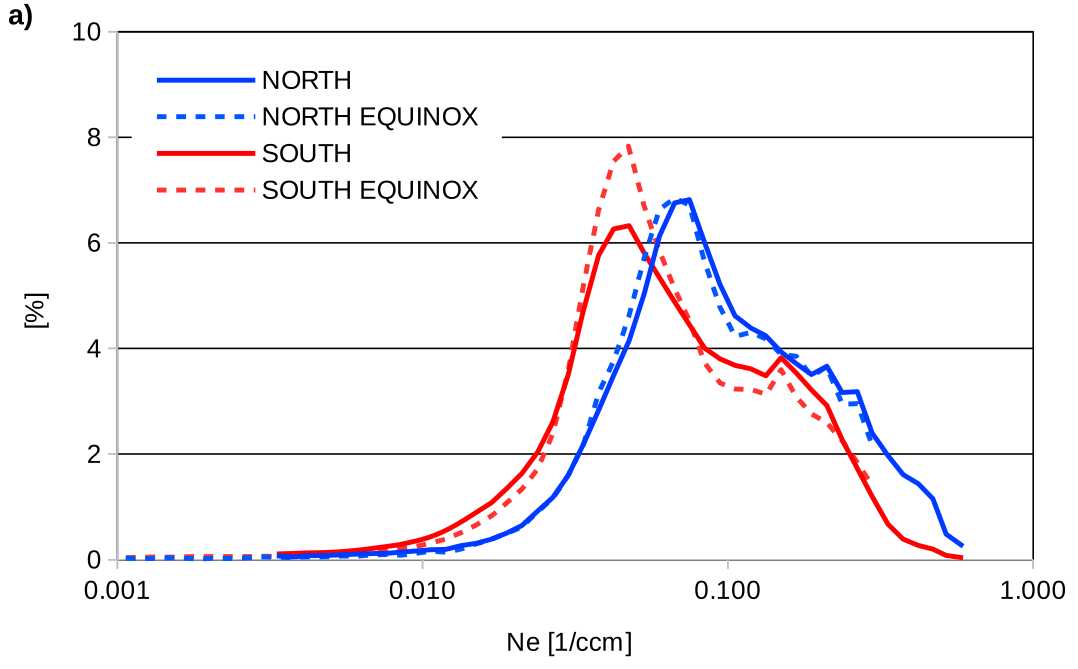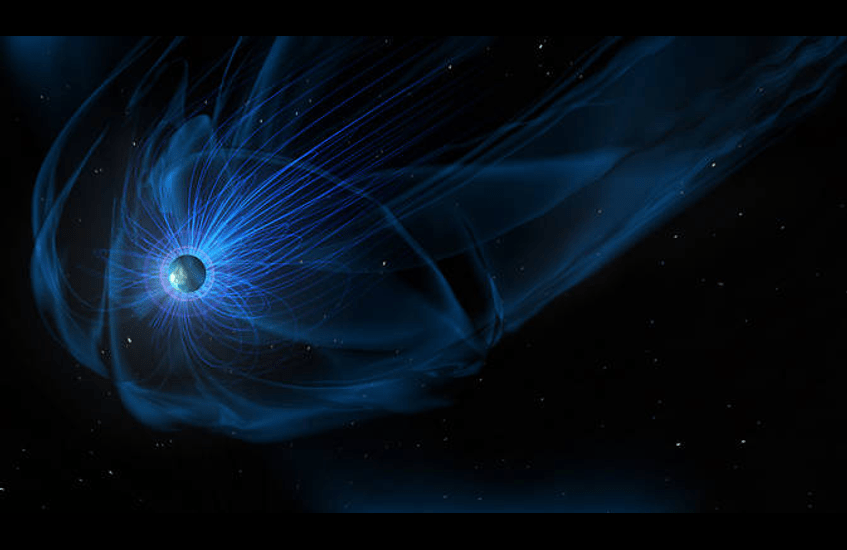Image Credit: NASA/Goddard/Conceptual Image Lab
F-region polar cap plasma density is the main source of the cold ion outflow observed in the magnetospheric lobes and is among the primary mechanisms of loss of Earth’s atmosphere.
In a previous study, BCSS senior researcher Stein Haaland and coauthors found that cold plasma density in the lobes of the magnetosphere is consistently higher in the Northern Hemisphere than it is in the Southern Hemisphere around September equinox. They speculated whether this hemispheric asymmetry could be explained based on plasma densities in the ionospheric polar caps.

Statistical distributions of ionospheric-origin cold plasma density (i.e., cold outflow) measured by Cluster spacecraft. The dashed lines show distributions from the Northern (blue) and Southern Hemisphere (red) within 10 days of September equinox. The Northern Hemisphere distribution is shifted to higher densities relative to the Southern Hemisphere distribution. Originally Figure 2a in Haaland et al. (2017).
That question has now been carefully addressed in a new study by an international team that is led by BCSS researcher Spencer Hatch. In this study they present evidence of several types of seasonal asymmetries in the polar cap plasma density. To their surprise, none of their findings support the conjecture made by Haaland’s team that polar cap plasma density is lower in the Southern Hemisphere than in the Northern Hemisphere around September equinox.
“Since the cold plasma in the lobes of the magnetosphere starts out in the ionospheric polar caps, it was natural to wonder if the plasma densities in the two polar caps are also asymmetric in the two hemispheres around September equinox. But measurements from the Swarm and CHAMP satellite missions show that there is no solid evidence to support that idea,” Hatch explains.

Distribution of F-region polar cap plasma density in the Northern (blue) and Southern (red) Hemispheres within ±15 days around September equinox. The thick dashed line indicates the median plasma density, and the two thin dashed lines indicate the first and third quartiles. The median lines show that typical densities in the Northern Hemisphere are roughly the same as they are in the Southern Hemisphere, against the expectations of Hatch’s team. (Adapted from Figure 2c in Hatch et al, 2020).
So, what else could cause the asymmetry? Their study cites at least three other candidate explanations. One is that the processes that drive ion outflow are somehow different between the two hemispheres. Another is that the topology of the Earth’s magnetic field, which is different in the two hemispheres, could produce asymmetric outflow. Or maybe ionospheric conductivity in the polar cap is different in each hemisphere.
“We still have a lot of work to do to rule out these other possibilities,” says Hatch.
This research is part of Hatch’s European Space Agency–funded “Swarm+ investigation of energetic ion up/outflow” project. Their team is working to better understand the processes that lead to the Earth slowly losing its atmosphere via ion outflow.




